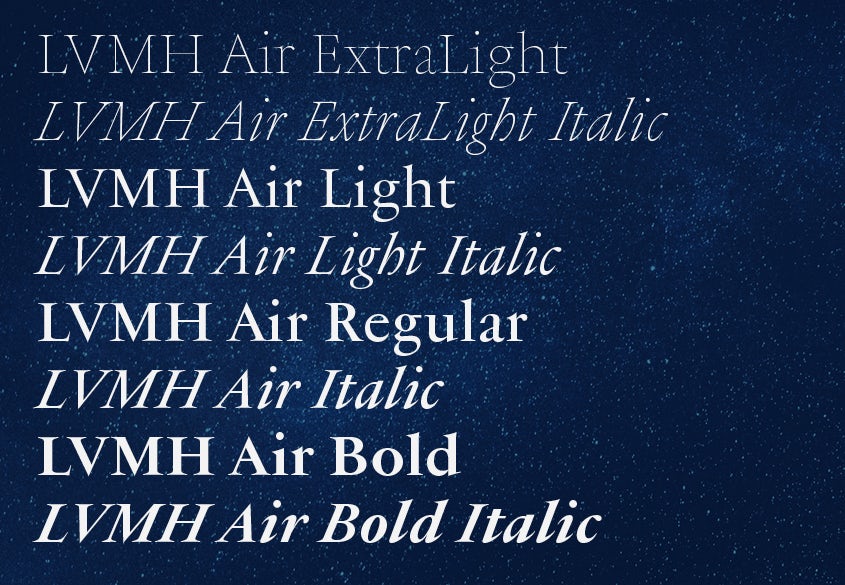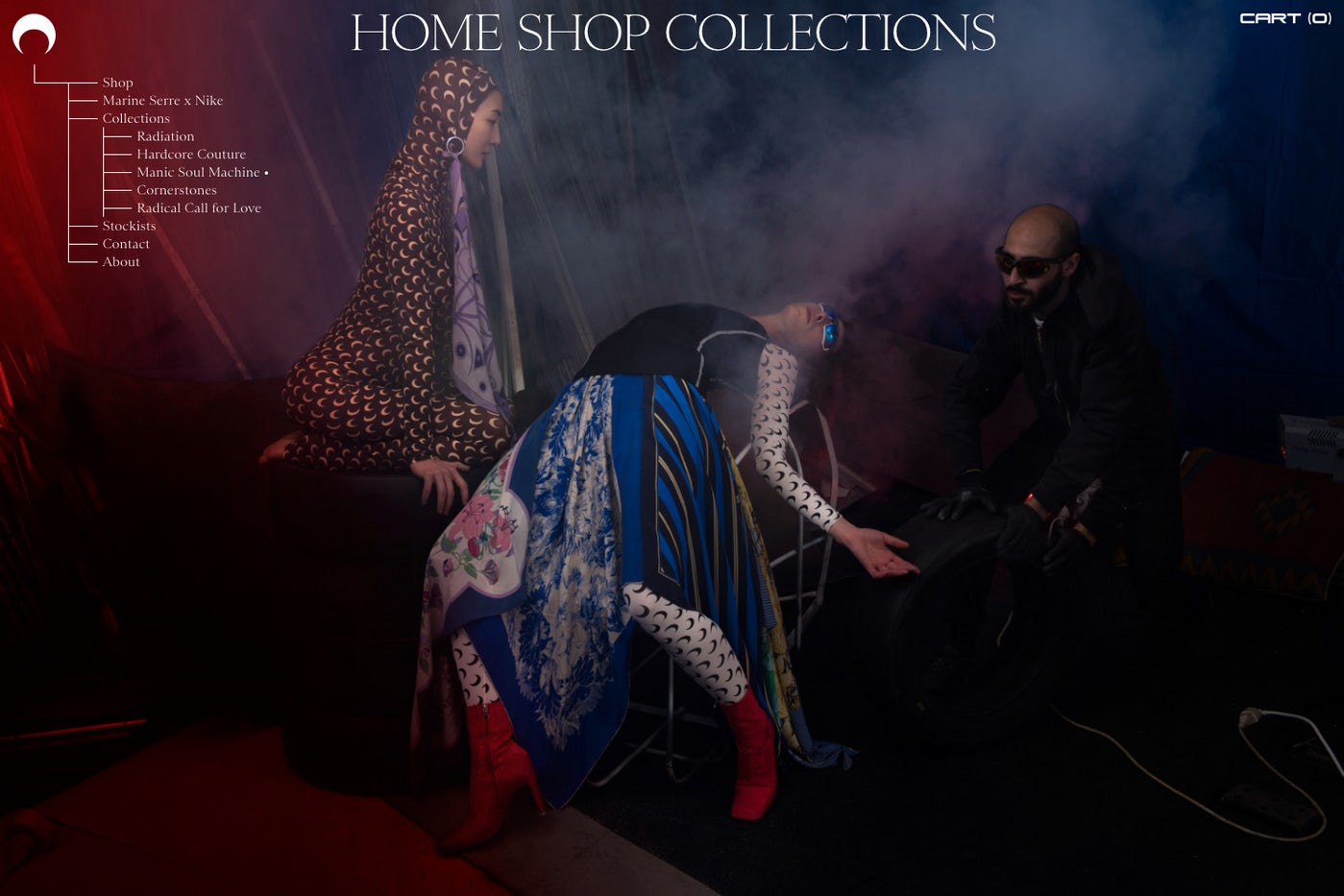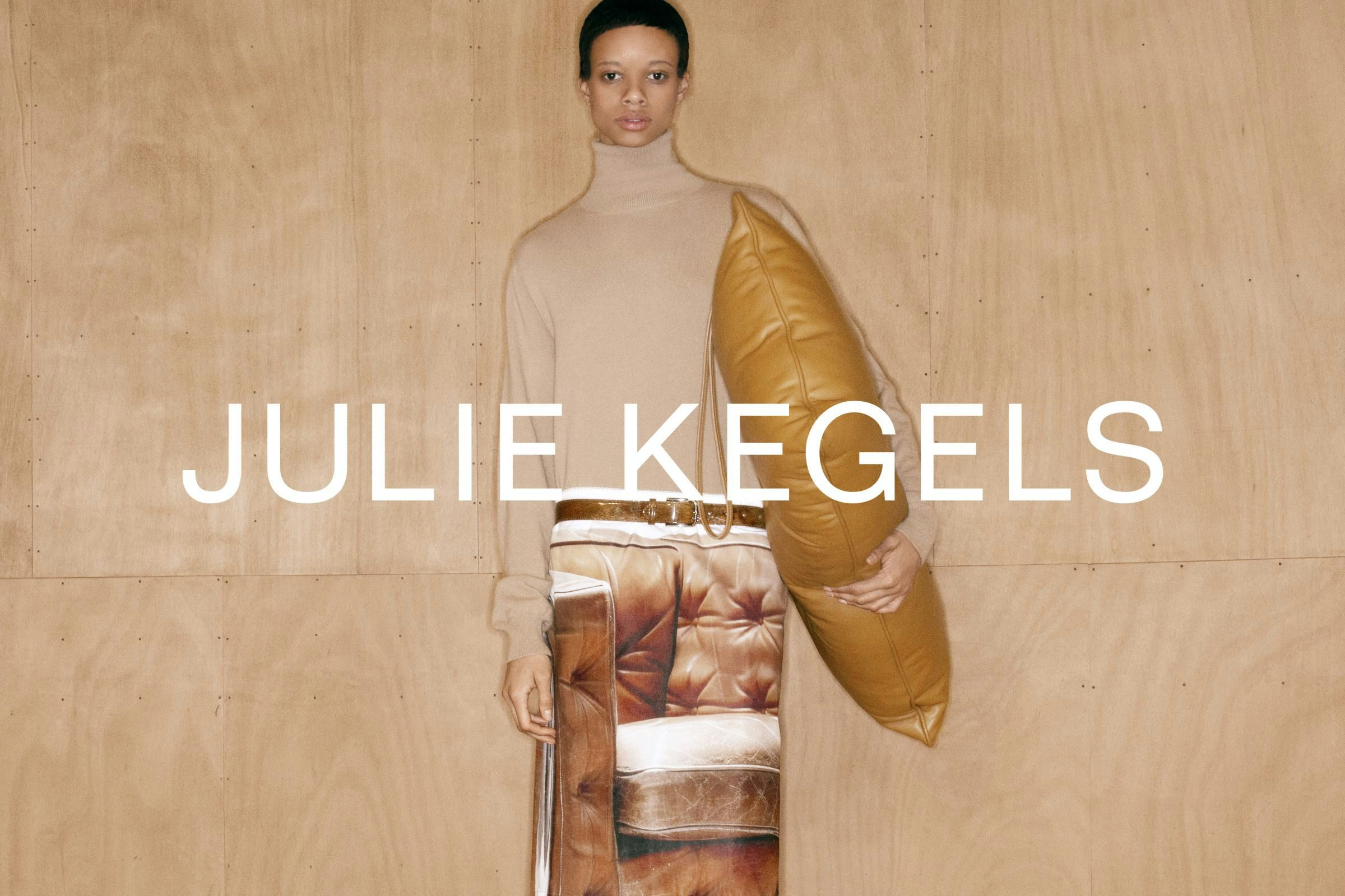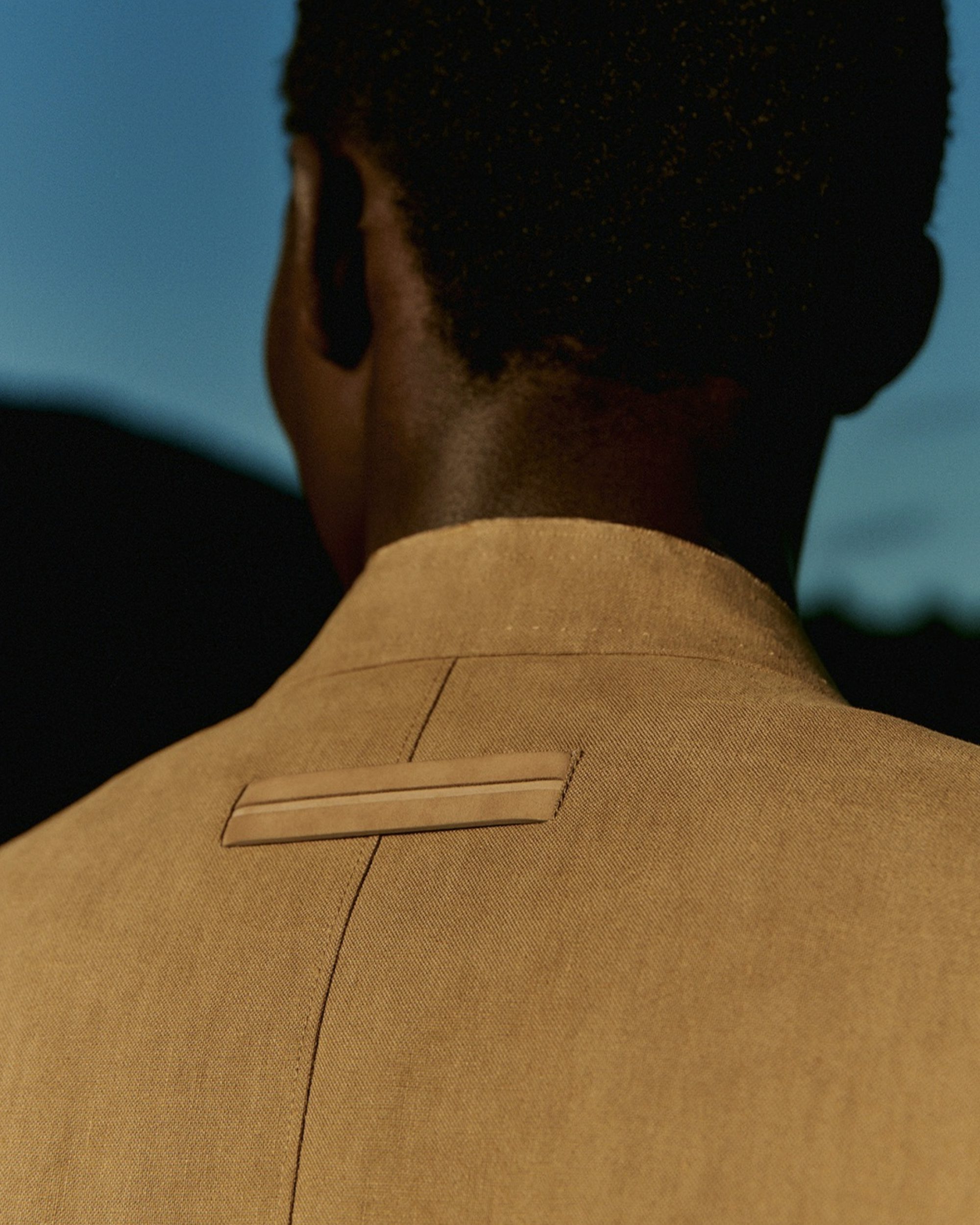The different design trends that communicate luxury today
Ever elusive, luxury promises to be timeless yet always on the move – and is not immune to wider trends. From research rabbit holes to CGI makeup and diamond-tipped styluses, we spoke to designers about how brands signify luxury today
It might be said that luxury trades on je ne sais quoi. There is the IYKYK of product drops, as well as quiet luxury’s minimal, or absent, branding. Yet design has a way of creating something recognisable as luxury through brand, laying down the ineffable in pixel and paint.
Paris- and Shanghai-based Production Type is a digital type design agency and foundry used to taking on such a challenge, with clients including Christian Dior Couture, Courrèges, Marine Serre, and perfumier Ormaie. There are different outcomes of each project: a “plain and pointy”, Germanic-influenced sans serif for Courrèges; a slightly retro, spreading all caps for Ormaie; and a full range of ultra light to black sans and sans serif cuts for LVMH – a variety to put the binary sans vs sans serif debate to bed, perhaps.
But while never relying on rules that might constitute a “typeface 101”, says Jean-Baptiste Levée, founder and president of Production Type, a job for LVMH put that je ne sais quoi to the test. Although the largest luxury conglomerate in the world, with 75 brands that run the gamut of luxury – fashion and leather goods, watches and jewellery, cosmetics and perfume, wines and spirits, retail and hospitality – it had always been “faceless”. “We are talking about a luxury player that does not sell anything, yet still needs to sweat luxury through all the pores of its surface,” he says.



Rather than “high-level storytelling”, Levée prefers to take clients on the creative journey: “Type design is one massive rabbit hole you just dig deeper and deeper – and it never ends,” he says. Making use of the studio’s work library for LVMH, they were “digging in the books … isolating very specific examples of very specific typefaces that I believed were relevant centuries ago, but would be still relevant for them today”. And at the end? “We delivered very crisp, fine, light, or ultra light cuts, but we also proposed very bold and black italic cuts that are extremely swingy and stable. They still look elegant, but it’s a different kind of elegance.” An ongoing collaboration, this year saw Production Type develop new letters for LVMH’s partnership with Formula One.
The privilege of having clients “well-educated” in design, he says, is “the trust they place in our ability to transform a brief”. The team might also collaborate with art directors, who may not be experts in type, but often have “obscure and deep references [with] regards to type design,” Levée adds. “I love having that kind of conversation with people, because we can take things at such a level of specificity.”
Levée argues that luxury brands “know exactly what they are talking about” – and font is just a part of their wider strategy. Custom font is desirable for “originality, singularity, uniqueness of tone of voice”, but it has “legal and jurisdictional reason” too as a way of “purchasing some sort of IP security”. It gives clients a “headstart with regards to competition”, whether “fair” (category competitors), or “unfair” (counterfeit goods), he says. “Fonts are an incredibly powerful medium and material to distinguish original from a copy. This is mostly unsaid, but it’s implied when it comes to putting figures on the value our work creates.”

He argues that designers need to help clients think beyond “what they want to express”, to how an audience actually reads design. “Audiences are more refined and subtle than we think they are,” he adds. While marketing copy might try and persuade you of the “ultimate luxury typeface”, there’s no straightforward route to it: “Typeface design is not a solitary act, and it’s always used in an environment of colour, photography, layout.”
It is hardly surprising that multiple tools are required, given luxury’s penchant for conjuring entire imagined worlds for its consumers. For Studio M Paris, the Paris- and Antwerp-based studio headed by Elisabeth Mestdagh, those worlds might include 3D video across the Sphere in Las Vegas for a Chanel perfume launch, Op-Art–esque animations for homeware brand Serax, or a surreal, collaged lookbook for jeweller Wouters & Hendrix.
It’s very important that you are as strong on a digital level as on a physical level, and that the brand is really consistent in terms of the whole visual identity
Mestdagh has used a mixed-media, layered, and crafted approach since her student days in Antwerp, when she found herself drawn to graduates of the city’s fashion academy – a strong gravitational pull thanks to alumni including the Antwerp Six, Martin Margiela, and more recently, Demna Gvasalia of Vetements fame.
“I started to collaborate with fashion students, and I made their portfolio[s],” Mestdagh says – building up her own portfolio and network in the process. She believes her attention to craft paired well with that of the fashion students, whose work was “already on such a high level”, even if you “cannot yet call it luxury”. Stints at Base Design and Baron & Baron in New York followed, and the latter’s luxury-heavy client list introduced an “insanely high” level of work, and widened her scope to art direction.



Since setting up her studio, Mestdagh has continually worked with emerging brands, some helmed by her friends, while an already-established Dries Van Noten was one of her first clients. Now clients include Chanel, Mugler, and Louis Vuitton alongside Bernadette and Julie Kegels; interior designers Axel Vervoordt and Gert Voorjans; and jewellery brands Wouters & Hendrix and Tiffany & Co. Like Levée, Mestdagh feels that working with luxury brands sets an elevated tone, “because you can work with good talent, good models, for example”. Even when budgets are modest, she adds, the level of creativity means the brands exist in a “rich universe”.
In addition to graphic design and art direction, Studio M has been working with tools such as CGI and AI. For luxury branding today, Mestdagh argues, “it’s very important that you are as strong on a digital level as on a physical level, and that the brand is really consistent in terms of the whole visual identity” – whether ecommerce, social media, store design, or packaging. While suited for the possibilities of digital, “what I like a lot about CGI,” she says, “is that it actually works a bit [like] graphic design.” It can be developed gradually and carefully, she explains, “compared to art direction for a photo, video shoot, or campaign, where it really needs to happen on set, in the moment”.
CGI can showcase the form and materiality of objects – high-end jewellery seemingly encased in ice – or be used in combination with other media to great effect. Campaign work for OD Beauty adds animated flowers and computer-generated mechanical arms to otherworldly photography by Elizaveta Porodina, building a nature-meets-tech aesthetic suited to luxury beauty today. After designing the publication for MoMu’s exhibition, Masquerade, Make-up & Ensor, meanwhile, CGI brings the gloss and liquidity of make-up to digital treatments of the book, pooling enticingly on pages: “I think it’s very nice to add something surrealistic to it; to create something very graphic but then to add a layer of dynamics, to make it playful, to really push it,” Mestdagh says.
View this post on Instagram
With AI, a series of experiments can be seen via the Instagram account @artificial.m.series, but the studio has stalled in using it for final work. Mestdagh says designers should “not be ignorant or old-fashioned about it” but when using AI herself for specific elements, would always want to “mix it with other parts of our work”. Anticipating a growing torrent of digital content, fuelled by the ease of AI-powered imagemaking, Mestdagh considers that luxury may double down on craft. She highlights how H&M’s move to create AI model doppelgängers may be commercially motivated, whereas in luxury, “the budgets are bigger, there’s more time,” she adds. “It’s maybe the human aspect which makes it a luxury.”
For Chistopher Moorby and David McFarline, co-founders of London-based studio Commission, working with luxury has had their human hands ripping 800 coloured ticket blocks for DKNY show invites, and scratching out a brand manifesto using a diamond-tipped stylus. “For me it’s that level of care: ‘oh my god, somebody would go to the lengths to do that’,” Moorby says.
Without fashion backgrounds themselves, the pair had been drawn to its attention to detail. A lodestar for Moorby was Maison Martin Margiela’s four white stitches on the back of a garment – “one of the coolest bits of branding detail ever”. Speaking to brand codes of deconstruction, anonymity and craft, as a motif, it is “tactile, it interacts with the products, and ultimately captures what [they are] all about”, he says.

Such “synchronicity” between product and brand – and between branding studio and fashion designer – is their aim. Commission’s swing tags for luggage brand Rimowa use the same rivets as the suitcases; for clothing brand Zegna the studio developed a stripe motif, variously inset at the nape of a jacket, or running down shopping bags. “It’s a level of care and thought that is operating on the same level as the product,” he says.
While hype culture has fallen, luxury has seen renewed emphasis on craft in recent years, notably in Jonathan Anderson’s creative directorship at Loewe. There is the foundation’s prestigious annual craft prize, and for Milan Design Week, he has commissioned interpretations of a particular typology (chairs in 2024, teapots in 2025) from designers. With quieter, more premium brands such as Hermès faring better than louder, “aspirational” luxury, this “quiet luxury” turn has seen the studio’s most recent work for Zegna dial back versions of the signature stripe, Moorby explains.
Two guys could clock each other on the golf course wearing Redan, and having never met, know they’re in the same fraternity
But this doesn’t mean a return to the old ways. For lab-grown diamond company Snow, Commission didn’t want to compete directly with natural diamonds. “I don’t think you can replace that kind of preciousness,” says Moorby. While the quality is “anatomically” the same, a lack of scarcity means “you can do anything”.
Snow is developing a cut for Prada in the shape of its triangle logo, and featured in Wales Bonner’s jewellery debut at the Met Gala 2025 as part of her distinct vision for luxury; “if we want to pierce a safety-pin through a diamond – we can do that”, Moorby adds. Making “a conscious move to not feel like a luxury brand”, Commission looked to tech: 70s and 80s Japanese hi-fi brands; and industrial uses: diamond-tipped saws, debuting “scraffiti” handwritten copy and a diamond-tipped stylus for Snow.



Other new projects, meanwhile, suggest multiple directions for luxury. On the one hand is Redan, a members-only golf club, offering private golf course access, chef’s tables and exclusive clothing (with “Loro Piana levels of manufacturing”), branded with a “quite Masonic” logo: “Two guys could clock each other on the golf course wearing Redan, and having never met, know they’re in the same fraternity.”
On the other, a new generation of luxury brands, including two Commission is working with, Syera Nyrvana and Marfa Stance, use made-to-order, direct-to-consumer models. The ultimate luxury for these models, Moorby suggests, might invite the customer fully into that experience “from the absolute point of origin to the finished garment”.
Being able to dip into “the language of [different] worlds”, says Moorby, requires an idea of luxury as “more about craft, thoughtfulness and care, than opulence”. With a more capacious definition, luxury may remain difficult to pin down, but is still up for brands and designers to shape.




